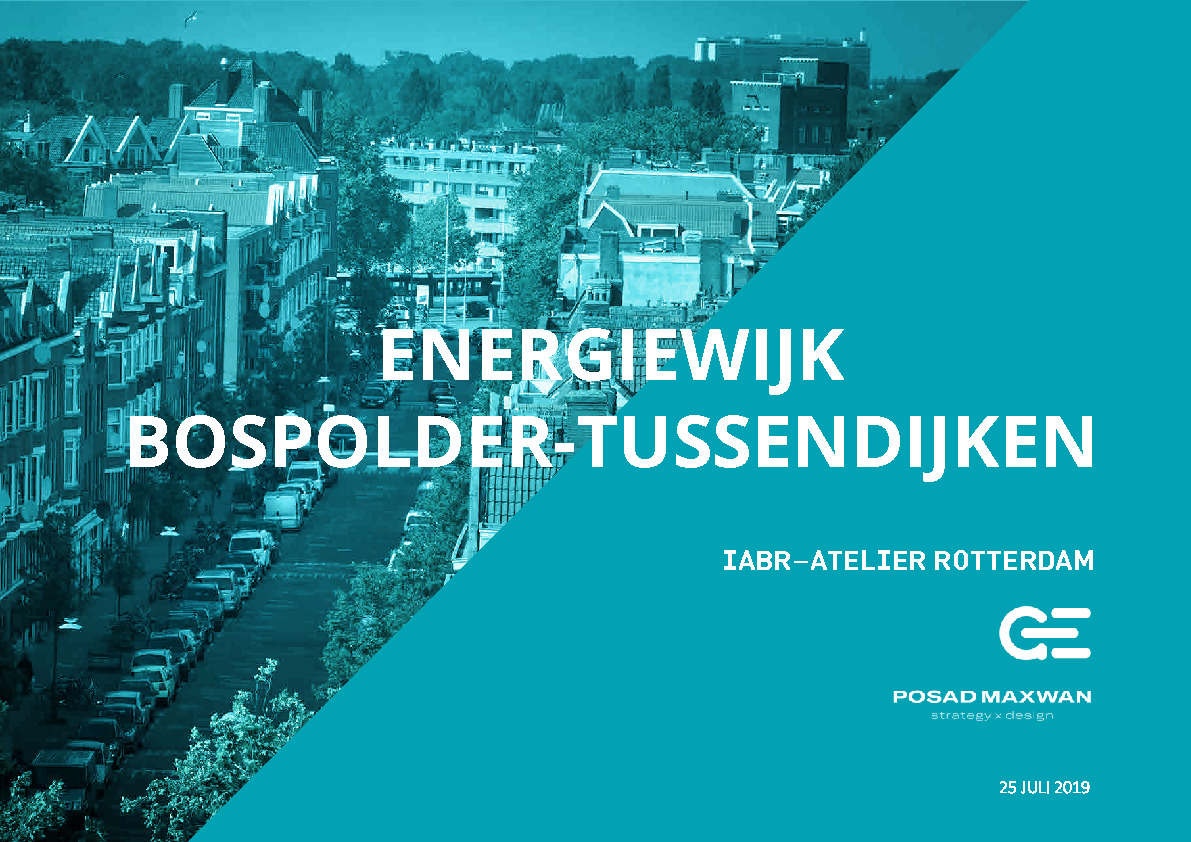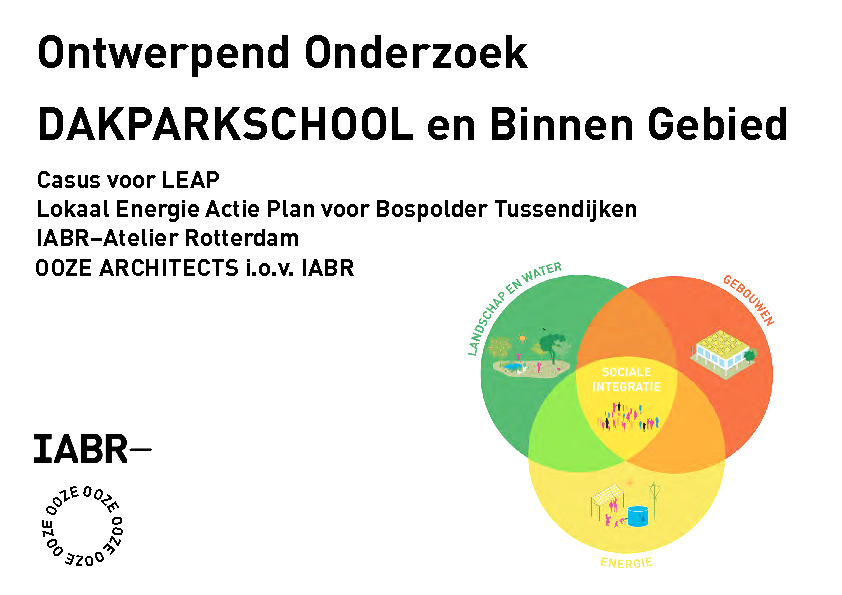LEAP Bospolder-Tussendijken
Work began in 2018 on an energy district in the Rotterdam district of Bospolder-Tussendijken, usually called BoTu for short. In 2018, BoTu was selected as one of the five districts in the ‘New energy for Rotterdam’ coalition agreement, which harbours the ambition of developing a ‘cohesive, sustainable regional approach’. It means that up to 2022, preparations will be made to make the district ‘gas-free’, to install new energy systems and to jointly seek, together with the district, the social added value of the energy transition. In parallel a plan will be developed of how BoTu can be elevated to the average socio-economic level in Rotterdam over the next ten years. Therefore, a broad coalition is working on the ‘resilient Bospolder-Tussendijken 2028’ district plan, of which the ‘BoTu energy district’ is an integral component. The Municipality of Rotterdam, Delfshaven Coöperatie, Havensteder housing corporation and a growing number of local partners are working on a strategy together. They are examining how the energy transition can be used as a lever to create a socially inclusive city.
In Bospolder-Tussendijken there are lots of people who are not occupied with the energy transition, but with trying to survive. Their daily concerns do not involve the energy transition but a good education, employment, a decent wage, good health and a clean and safe neighbourhood. Is there any way in which a radical overhaul could simultaneously help the people in BoTu achieve their goals?
The integral district approach encompasses a wide range of initiatives that have sprung up in various places. In 2017, an energy cooperative was founded in the district to make renewable energy accessible to all residents (also those with a small budget). The energy transition is a positive thing and people with money can afford to pay for the transition: they install solar panels on their roofs and purchase a heat pump, and can satisfy their energy needs in no time at all. However, this is not the case for all residents. With the Delfshaven Energie Coöperatie the aim is to try and anchor as much ownership of the energy infrastructure as possible in the district. This meant that the first project involved installing solar panels on several schools in the district. Residents can rent part of the panels and in doing so save money as well as energy. Lots of very interesting projects also emerged from elsewhere in the district. In the ‘Wijkenergie Werkt’ (District Energy Works) project local residents are trained so they can work for the WijkEnergieWerkt installation firm. These employees help their neighbours to connect their homes to renewable energy. A similar initiative is one of the ongoing projects by 'De Beroepentuin’, in which young people and other residents who are distanced from the labour market are retrained as electricians. Their qualification as an energy installer improves their prospects of finding a job in the future. In ‘BOTU 2028’ young people from the neighbourhood were also involved in renovating a number of flats in Gijsinglaan so they could gain some work experience. A link was established between the interventions necessary to achieve the energy transition, and the need for training and employment for the district.
The research by design commissioned by the International Architecture Biennale Rotterdam (IABR) and the Municipality of Rotterdam was conducted by OOZE and PosadMaxwam & Generation.Energy, and applied socio-technical potentiality mapping to devise a Local Energy Action Plan (LEAP) for the district as a whole.
Delfshaven Cooperatie, IABR, Havensteder, Rebel, Municipality of Rotterdam
energy
solidarity, policy innovation, good citizenship
district
gobotu.nl
Work session - Bospolder-Tussendijken in the spotlight
photo: IABR-Atelier Rotterdam - Ooze, 2020

download / view PDF:
Energy district Bospolder-Tussendijken

download / view PDF:
Exploring (un)known networks

download / view PDF:
Research by design for Dakpark School and Binnen Gebied
photo: IABR–Atelier Rotterdam - PosadMaxwan & Generation.Energy, 2020
photo: IABR–Atelier Rotterdam - Transformers, Beekhuizen Bindt, Eliza Works, Steps2Inspiration, 2020

download / view PDF:
Resilient BoTu to urban average in ten years